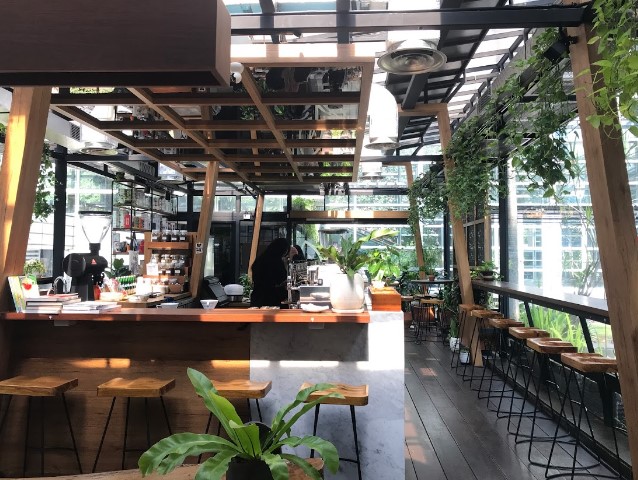
Puu Kekaa, also known as Black Rock, juts out into the Pacific Ocean on Kaanapali Beach in Maui.
Dusty Pixel photography/Getty ImagesOne of the most evocative spots in Hawaii, Puu Kekaa, also called Black Rock, is located along the north end of Kaanapali Beach on the island of Maui. It offers stunning views, snorkeling and a nightly cliff diving ceremony.
But Puu Kekaa may also have the highest rate of snorkeling-related drownings per year. Yet there are no lifeguards, no warnings.
Locals are familiar with its strong currents, but visitors, who are not aware, can get caught in its waters, panic and drown. Earlier this year, a 52-year-old California man drowned at Puu Kekaa.
“By far, it’s the No. 1 drowning capital in Hawaii,” former Maui Fire Department battalion chief of ocean safety Colin Yamamoto told SFGATE. He managed all Maui County lifeguards from 2014 to 2017. Now retired, he is a strong advocate for a lifeguard station at Puu Kekaa.
According to a drowning and aquatic injury trends report covering 2009 to 2018 by the Hawaii State Department of Health, the leading cause of fatal injuries for visitors in Hawaii is ocean drowning — ahead of car accidents and falls — and snorkeling is the leading cause of those ocean drownings.
The island of Maui had the highest number of snorkeler drownings with 94 deaths, followed by the island of Oahu, which had 70 snorkeler drownings during the same time period. And of all the beaches on Maui, Puu Kekaa is the single location with the highest number of snorkeling-related fatal drownings, with 18 visitor deaths.
Hanauma Bay on Oahu had 28 visitor deaths due to snorkeling during the same time period, but Puu Kekaa is still suspected to have the highest rate of death.
“Hanauma Bay has got to have 10 times the number of people than Black Rock,” Daniel Galanis, injury epidemiologist for the Hawaii State Department of Health, told SFGATE. “When you translate it to incidents per given number of people there, it’s a pretty good assumption that the rates are higher for Black Rock.”
Hanauma Bay received an average of 3,000 visitors per day up until 2019. There are no official counts of how many people visit Puu Kekaa, but Yamamoto estimated it at about 500 to 700 per day.
Another disturbing trend is how quickly the number of snorkeling deaths in Hawaii have increased over time. In the 5-year period of 1994 through 1998, there were 19 snorkeling deaths in Hawaii. That number grew to 103 from 2014 to 2018.
Galanis thinks the increase of deaths due to snorkeling could be because the amount of visitors has also increased through the years — and snorkeling is an easily accessible activity.
“You don’t need a lot of equipment,” Galanis pointed out, “and the equipment you do need can be purchased for $20 to $30 bucks, and then you just get yourself to a beach and walk into the water.”

Snorkeling is the leading cause of fatal injuries for visitors in Hawaii.
Mike Tittel/Getty Images/Image SourceYamamoto also said he believes the higher number of snorkeling deaths is due to more visitor arrivals, but he also attributes the increase to the tourism industry not wanting to scare away tourists.
“People are dying needlessly because the visitor industry is not giving a stronger message about ocean safety,” Yamamoto said. “That’s why we’re having all these drownings, because their messaging was very, very soft and subtle. They didn’t want to say people are drowning, people are dying, be careful.”
When Yamamoto was still with the Maui Fire Department, he proposed a variety of potential solutions to improve safety at Puu Kekaa. That included a 2017 recommendation to move the lifeguard stand from Hanakaoo (also known as Canoe Beach) — where there are far fewer incidences of drownings — to Puu Kekaa. But that was overwhelmingly rejected by Lahaina residents and lifeguards.
“Basically, what’s happening in Kaanapali-Lahaina, which is a tourist destination, the locals are being pushed out of the beaches cause of the hotels and now there’s limited beach access, cause there’s a hotel there that only gives 10 parking spaces for public use,” said Yamamoto. “They didn’t want to give up their lifeguards that protected them and give it to the tourists 1 mile north. That was the mindset of the community.”
Yamamoto later suggested a cost split three ways between the County of Maui, the state of Hawaii and the Kaanapali Operations Association, which represents the Kaanapali Beach resorts. A new lifeguard tower with a staff of five personnel, rescue watercraft and storage unit could cost about $850,000 per year after initial costs of $200,000.
It didn’t go anywhere.
“The current mayor, he’s in favor of putting lifeguards at Puu Kekaa,” said Yamamoto, “but that was in early 2020 and now it’s 2022, and nothing’s happened.”
Editor’s note: SFGATE recognizes the importance of diacritical marks in the Hawaiian language. We are unable to use them due to the limitations of our publishing platform.





More Stories
Beach Volleyball falls to Long Beach State in Big West Championship
Hawaii’s Hill, Long Beach State’s Valenzuela eager to match wits
Hawaii blocks some Waikiki sands for seal pup